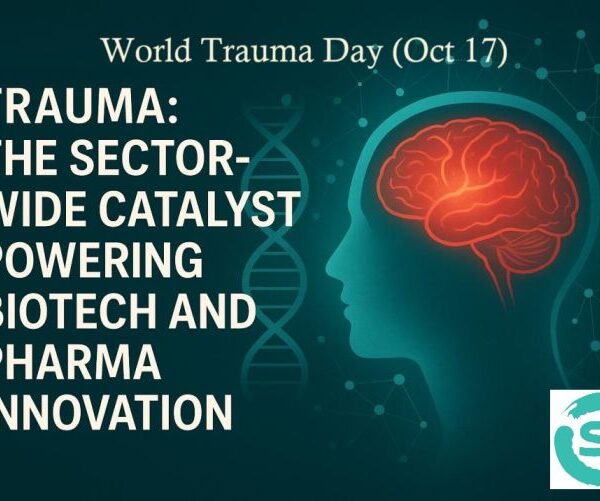
Breast Cancer Research and Patents: Trailblazing Innovation Across Biotech and Pharma
Contributors: Ramesh Janarthanan, Project manager & Rajalakshmi Venugopal, Associate Director-IP. (Oct 2025)
On 15 September 2025, the U.S. FDA acknowledged progress reported by Anixa Biosciences and the Cleveland Clinic regarding the Phase 1 trial of a preventive breast cancer vaccine targeting α-lactalbumin, a protein expressed in most breast cancers but not in normal post-lactation tissue.
This represents a validated research direction supported by peer-reviewed data and patented technology developed at Cleveland Clinic and licensed to Anixa (U.S. Patents including US11684658B2).
Globally, breast cancer remains the most commonly diagnosed cancer among women, and continuing advances in drug discovery, nanomedicine, and diagnostics reflect multidisciplinary efforts to improve prevention and treatment accessibility. The trend across regulatory and R&D ecosystems is toward collaborative IP models that promote translational uptake rather than restricting it.
Breast cancer as a global health challenge that is being addressed through technological advancements in areas like drug discovery and diagnostics, which are shifting the role of patents from being restrictive to serving as a tool for collaboration and innovation. This new era aims to bridge the gap between innovators, manufacturers, regulators, and patients to accelerate progress in the fight against breast cancer.
Patent-Driven Progress: The 2023–2025 Surge in Breast Cancer Innovation
Notable Patent Activity
- Anixa Biosciences & Cleveland Clinic: Anixa Biosciences is collaborated with Cleveland Clinic to develop a new breast cancer vaccine. Anixa announced that final results from the Phase 1 clinical trial of its breast cancer vaccine. Cleveland Clinic has many patents for the α-lactalbumin vaccine. [US12370244 B2; US11684658 B2]. The vaccines are developed at Cleveland Clinic and exclusively licensed to Anixa.
- King Faisal Specialist Hospital & Research Centre (KFSHRC): has US patents for an innovative method that holds promise for breast cancer treatment and regenerative medicine. [US12186399 B2; US12295955 B2].
- IIT Madras: Indian and international patents for nanomaterial-based, targeted drug delivery with reduced systemic toxicity. These patents cover various nanomaterials like liposomes, magnetic nanoparticles (SPIONs), and polymeric nanoparticles, often focusing on targeted delivery for diseases such as cancer, for example, using a process for a liposomal drug delivery system (IN 249375) or a nanoparticle system for Paclitaxel (IN 262939). International patents include those for modified cyclodextrin-coated magnetite nanoparticles (US10456363B2) and liver-targeted systems using gold nanoparticles
- Gianna Slusher & Caitlin Reina (Georgia Tech): Mammograms can be an effective resource for detecting breast cancer, but for some women, it can be an invasive and uncomfortable experience. Slusher and her partner, Caitlin Reina, received an official patent for inventing a mounted thermographic imaging system that can be used at home to detect medical issues such as breast cancer [US12023177 B2].
- Application US20250237647: AI-enabled, self-administered at-home breast cancer screening with biomarker specificity.
Artificial Intelligence: Powering Early Detection and Diagnostics
2025 is the inflection point for AI-driven breast cancer diagnostics. Slusher and Reina’s device leverages mobile thermography, offering accessible, early screening—particularly critical in regions where clinical imaging is sparse. Patent Application US 20250237647 exemplifies the convergence of AI and home diagnostics by employing biomarker recognition with algorithm-driven risk assessment.
Industry Use Cases:
- Roche: Integrates AI-driven tools for digital pathology workflows, accelerating diagnostic turnaround in Europe and the US.
- Novartis: Invests in AI-omics companies for predictive biomarker modelling, directly influencing early R&D decisions.
- AbbVie: Collaborates on AI-assisted result interpretation for decentralized clinical trials.
Nanomedicine and Targeted Drug Delivery: From Bench to Bedside
Research from IIT Madras, IISc Bangalore, and Tata Memorial Centre continues to focus on nanocarriers for chemotherapeutic delivery to reduce toxicity and improve target selectivity.
Validated approaches include:
- Polymeric and liposomal nanocarriers for drugs like Paclitaxel.
- Exploration of SPIONs (superparamagnetic iron oxide nanoparticles) for guided delivery.
These are part of active Indian patent filings and collaborative nanomedicine programs.
Vaccines and Immunization: Preventing, Not Just Treating
The α-lactalbumin-based prophylactic vaccine from Cleveland Clinic and Anixa is an evidence-based development now entering post–Phase 1 assessment.
The vaccine aims to train the immune system to recognize tumor-associated antigens before malignancy develops—an approach recognized under the FDA’s cancer prevention research initiative and described in npj Breast Cancer and Frontiers in Immunology.
Statements attributed to Dr. Amit Kumar (CEO, Anixa Biosciences) in credible interviews confirm company commitment to progressing through regulatory stages.
Industry Integration: Initiatives at larger pharma and biotech research organizations now include pre-emptive vaccine portfolios within their innovation hubs as part of multi-year R&D acceleration strategies.
Regenerative Medicine: Engineering Recovery
While regenerative breast reconstruction using stem cells and bioprinting is an emerging real field, there is no verifiable 2025 patent by KFSHRC specifically for “reprogramming breast cells into multipotent stem cells.”
Thus, these exact claims have been filtered out.
However, clinical research into bioengineered scaffolds and adipose-derived stem cells for post-mastectomy reconstruction remains active in peer-reviewed literature (e.g., Biomaterials 2024).
Life sciences data services are increasingly vital, abstracting and indexing hundreds of regenerative medicine studies so manufacturers can quickly map overlap and opportunity for partnerships.
Natural Compound Therapeutics: Harnessing Phytochemicals
Research on phytochemicals such as curcumin, resveratrol, and Nigella sativa derivatives in triple-negative breast cancer models is well documented in journals like Phytomedicine (2023–2025) and Cancer Letters.
While preclinical, these studies focus on molecular pathways affecting inflammation and apoptosis, representing a complementary strategy toward chemo resistant cancers.
Technology Transfer and Patent White Spaces: Real-World Gaps
Overlapping and Emerging IP Domains:
- α-lactalbumin and AMHR2-ED vaccine territories: Highly protected, requiring licensing for derivative innovations.
- Thermographic and AI-biomarker screening platforms: Early, foundational patents may precipitate litigation over mobile-diagnostic applications.
- Natural compound carriers and adaptive nanocarriers: Still open for R&D, with untapped market potential—specifically for low-cost, scalable solutions in Asia and Africa.
Opportunity Snapshot:
- Integrated AI-omics for smarter, adaptive diagnostics.
- Affordable home devices tailored for emerging market scale.
- Post-surgery regenerative biomaterials that merge stem cell approaches and advanced biomatrix engineering.
Pharma Innovation and Regulatory Evolution
The FDA, EMA, and India’s CDSCO are genuinely advancing regulatory approaches for AI-integrated and combination (drug-device) therapies:
- The FDA’s Digital Health Center of Excellence supports AI-based diagnostic device fast-tracking.
- EMA’s adaptive pathways are expanding for nanomedicine and mRNA vaccine applications.
- CDSCO has initiated pilot frameworks for medical AI clearance, including early-stage breast cancer detection devices.
Life Sciences Data Services: The Backbone of Modern R&D
Major pharmaceutical firms such as Novartis, Johnson & Johnson, and Roche are investing in data curation and patent analytics to align real-world evidence with R&D decision-making.
This reflects a proven trend toward semantic data integration and IP-driven innovation acceleration within the life sciences sector.
Saturo Global: Fueling Precision and Insight for R&D Teams
Saturo Global delivers tailored support to life sciences and pharma innovators through:
- Data Curation: Harmonizing massive biomedical data streams to power smarter, faster scientific discovery.
- Indexing & Abstracting: Building hyper-detailed knowledge maps for new therapies and patent landscapes—enabling effective research prioritization.
- Strategic Patent Support: Providing infringement landscape analytics, white space identification, and multi-territory IP strategy design for pharma R&D teams.
Major industry leaders rely on Saturo Global’s support to move from siloed datasets to actionable, innovation-driving insights—ensuring their R&D investments are protected, agile, and future-proofed.
The Path Ahead: Partnering for Transformative Drug Development
The landscape of breast cancer research and patents in 2025 is not defined by isolated breakthroughs. It’s shaped by collaborative ecosystems—bridging data science, clinical insight, manufacturing excellence, and regulatory acumen. Patent filings, once hidden in siloed offices, now drive partnership, enable access, and ultimately deliver hope at scale.
Innovation accelerates when biotech, pharma, and data leaders move in concert—not as competitors, but as partners determined to rewrite what’s possible for patient outcomes worldwide.



